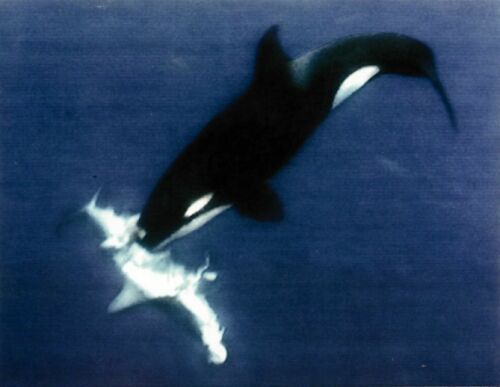By Ian Anderson, Auckland
Killer whales are notorious for playing with their food. But the whales off the northern shores of New Zealand have invented a new game: they play Frisbee with stingrays. The whales seem to toss the rays around until they are in a position where they can eat the bulk of the fish without the dangerously barbed tail end.
Ingrid Visser, a research student at the University of Auckland, spent two years watching killer whales in the waters off the North Island, between Auckland and the Bay of Islands. She is the first person to witness the animals playing the cetacean version of Frisbee, sometimes with rays 2 meters across.
"The killer whale never ceases to amaze," says John Ford, director of research and conservation at Vancouver Aquarium and an expert on killer whales. "The animal is a very innovative eater." In 25 years of observation along the coast of British Columbia he has never seen a killer whale eat a stingray, and does not know of it happening anywhere else. The only sign of any interaction between the two species until now, says Ford, was the discovery of a stranded whale off the South American coast that had stingray barbs in its hide.
The extra item in the killer whales' diet also shows that they sometimes feed on fish plucked from the seabed. "This has been suspected because halibut has been found in their stomachs," says Ford.
Visser watched 19 whales, most of them male, take 55 stingrays of three species: the eagle ray, and the short-tailed and long-tailed stingrays. On one occasion, two whales ate 18 stingrays in a six-hour binge.
"Normally one killer whale dives down to find a ray and then singles others," says Visser. She observed them in water as deep as 20 meters, often doing headstands. "The whale surfaces with the ray still alive, flapping in its mouth."
Sometimes, a whale flips the ray out of the water before tossing it around like a Frisbee with at least one other whale. Visser says this may be an attempt to reposition the ray so the whale can eat it without being stung. It may also be the way adult whales show youngsters how to tackle dangerous prey, Ford suggests. Visser will present her findings at the World Marine Mammal Science Conference in Monaco in January.
The rays sometimes try to escape. "They leap onto the beach or hide under rocks," says Visser. And if there is a wharf nearby, they will even try to hide between the pilings.
From New Scientist, 16 August 1997



